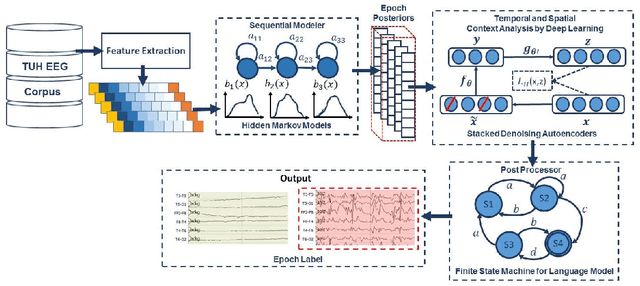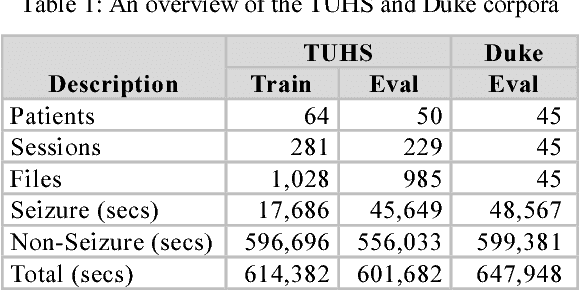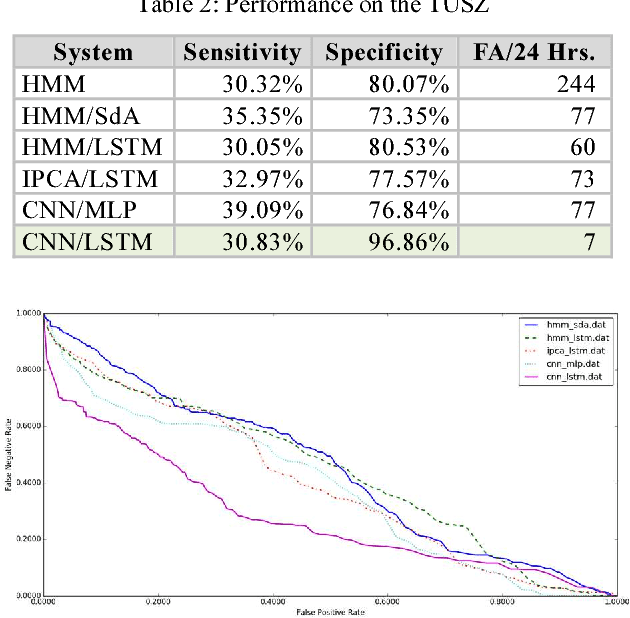Deep Architectures for Automated Seizure Detection in Scalp EEGs
Paper and Code
Dec 28, 2017



Automated seizure detection using clinical electroencephalograms is a challenging machine learning problem because the multichannel signal often has an extremely low signal to noise ratio. Events of interest such as seizures are easily confused with signal artifacts (e.g, eye movements) or benign variants (e.g., slowing). Commercially available systems suffer from unacceptably high false alarm rates. Deep learning algorithms that employ high dimensional models have not previously been effective due to the lack of big data resources. In this paper, we use the TUH EEG Seizure Corpus to evaluate a variety of hybrid deep structures including Convolutional Neural Networks and Long Short-Term Memory Networks. We introduce a novel recurrent convolutional architecture that delivers 30% sensitivity at 7 false alarms per 24 hours. We have also evaluated our system on a held-out evaluation set based on the Duke University Seizure Corpus and demonstrate that performance trends are similar to the TUH EEG Seizure Corpus. This is a significant finding because the Duke corpus was collected with different instrumentation and at different hospitals. Our work shows that deep learning architectures that integrate spatial and temporal contexts are critical to achieving state of the art performance and will enable a new generation of clinically-acceptable technology.
 Add to Chrome
Add to Chrome Add to Firefox
Add to Firefox Add to Edge
Add to Edge